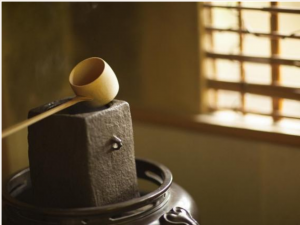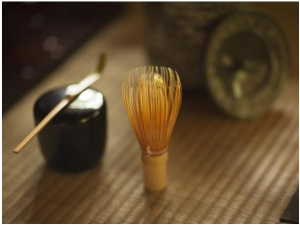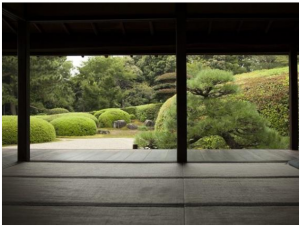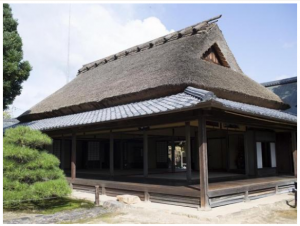
Unlike fruits, vegetables, and many foods in Japan, udon noodles don’t have a season. They are a popular item year round across the country, especially at lunch time, when many shops will be full of people slurping up the soft, white, delicious noodles. It was that slurping that caused my dad to raise his eyebrows when he first came to Japan and ate udon. However, it is actually a way that helps you taste both the noodles and the soup, and enjoy the aroma. Even if it is a little uncomfortable for you, I suggest you try it!
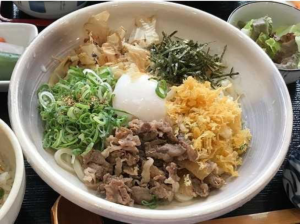
Atop the white noodles, you might find a variety of toppings, like beef, green onions, battered or fried shrimp, pumpkin, sweet potato, pumpkin, or a nest-like combination of sliced carrots and onions. I often order the udon topped with fried tofu, known as “kitsune udon” (fox udon), stemming from the belief that foxes like fried tofu. Regardless of which kind of udon I order, it is always consistently delicious, especially on a cold winter’s day.
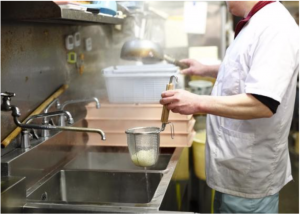
Many people eat udon in shops or buy it at the grocery store, but we have an experience that allows you to try making it from scratch! Feel the dough in your hands, and learn how to make udon like a pro! Totsukawa Udon Komichi uses water from Totsukawa Village, Nara, bringing some of the fresh flavors of the mountains to you in the city. Please feel free to check it out!
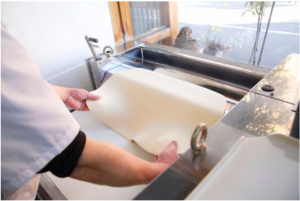

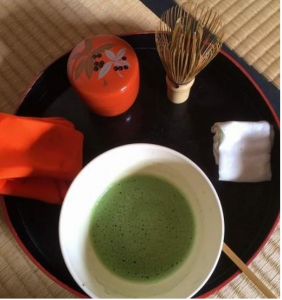 That is why some teachers decide to meet their students half way. By moving the practice to a table top and chairs, students can focus on elements of tea ceremony more important than sitting. Students can learn about the flow, the utensils, and the heart and mind of cha-no-yu. They can learn how the season is reflected in the utensils, decorations, and sweets. They can focus on appreciating the beauty of these items, and the efforts the host must have gone through to prepare them. Doing all this, in a painless way none the less, helps ensure that everyone has a nice time together.
That is why some teachers decide to meet their students half way. By moving the practice to a table top and chairs, students can focus on elements of tea ceremony more important than sitting. Students can learn about the flow, the utensils, and the heart and mind of cha-no-yu. They can learn how the season is reflected in the utensils, decorations, and sweets. They can focus on appreciating the beauty of these items, and the efforts the host must have gone through to prepare them. Doing all this, in a painless way none the less, helps ensure that everyone has a nice time together.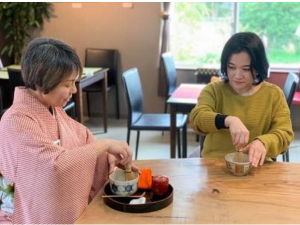 Nara is home to some of the most famous pottery and tea whisks in Japan, and produces lots of tea in its rolling hills, so its connection with tea ceremony goes back to the art’s beginnings. Perhaps one of the ways of keeping this tradition alive and well is to make it more accessible for newcomers, and we have a program that takes a step in that direction. Music Cafe Anges in Kashihara City offers participants the chance to learn about tea ceremony and whisk a bowl themselves in the comfort of a table and a chair. Participants don’t just learn about the process, but also the philosophy of this ancient art. With tea produced in Nara and traditional sweets from a popular local shop, it is a chance to comfortably experience a tea ceremony unique to this place and this time. If you are interested, please check the link below.
Nara is home to some of the most famous pottery and tea whisks in Japan, and produces lots of tea in its rolling hills, so its connection with tea ceremony goes back to the art’s beginnings. Perhaps one of the ways of keeping this tradition alive and well is to make it more accessible for newcomers, and we have a program that takes a step in that direction. Music Cafe Anges in Kashihara City offers participants the chance to learn about tea ceremony and whisk a bowl themselves in the comfort of a table and a chair. Participants don’t just learn about the process, but also the philosophy of this ancient art. With tea produced in Nara and traditional sweets from a popular local shop, it is a chance to comfortably experience a tea ceremony unique to this place and this time. If you are interested, please check the link below.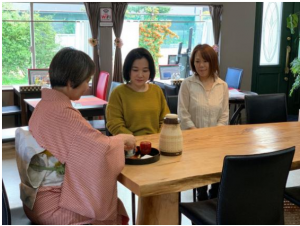
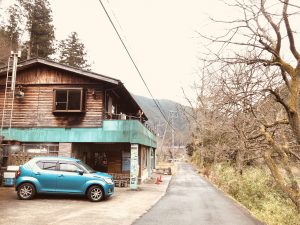

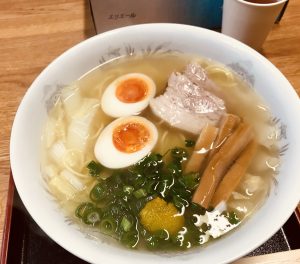
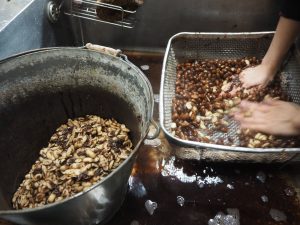 “Yokan” is a Japanese dessert made from mashed beans and gelatin, and often flavored and colored as well. Every winter, Asahikan in Kawakami Village makes its “yuzu yokan” from scratch. They boil the beans in a wood-fire pot, then rinse them and skin them before mashing them up to be used in the dessert. They continue to use a recipe and methods that have been passed down through generations, including picking the yuzu, a citrus fruit, from trees nearby. Flakes of the fruit’s yellow skin add a subtle flavor to the yokan’s sweetness, and a bright element to the already pink-colored dessert.
“Yokan” is a Japanese dessert made from mashed beans and gelatin, and often flavored and colored as well. Every winter, Asahikan in Kawakami Village makes its “yuzu yokan” from scratch. They boil the beans in a wood-fire pot, then rinse them and skin them before mashing them up to be used in the dessert. They continue to use a recipe and methods that have been passed down through generations, including picking the yuzu, a citrus fruit, from trees nearby. Flakes of the fruit’s yellow skin add a subtle flavor to the yokan’s sweetness, and a bright element to the already pink-colored dessert. 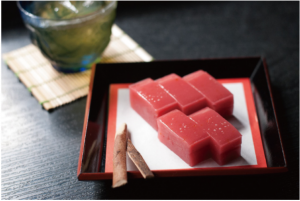 As a 130-year-old traditional Japanese inn, Asahikan offers guests the opportunity to experience what staying in the countryside might have been like in a previous era. With its traditional architecture, including a stunning garden on its second floor, you can walk the same wooden halls and stay in the same tatami rooms as its many visitors have done for over a century.
As a 130-year-old traditional Japanese inn, Asahikan offers guests the opportunity to experience what staying in the countryside might have been like in a previous era. With its traditional architecture, including a stunning garden on its second floor, you can walk the same wooden halls and stay in the same tatami rooms as its many visitors have done for over a century.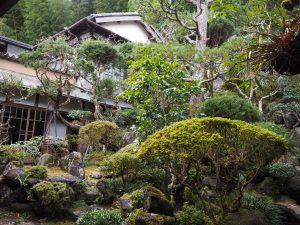 If you are looking for some outdoor fun as well, we offer an experience in which you can stay at Asahikan, chop some bamboo from its mountain grove, and turn that bamboo into your own lunchbox. You’ll take that lunch with you when you go out to explore the wide variety of moss in our village, and then create your own moss terrarium. Young or old, all ages are welcome!
If you are looking for some outdoor fun as well, we offer an experience in which you can stay at Asahikan, chop some bamboo from its mountain grove, and turn that bamboo into your own lunchbox. You’ll take that lunch with you when you go out to explore the wide variety of moss in our village, and then create your own moss terrarium. Young or old, all ages are welcome!